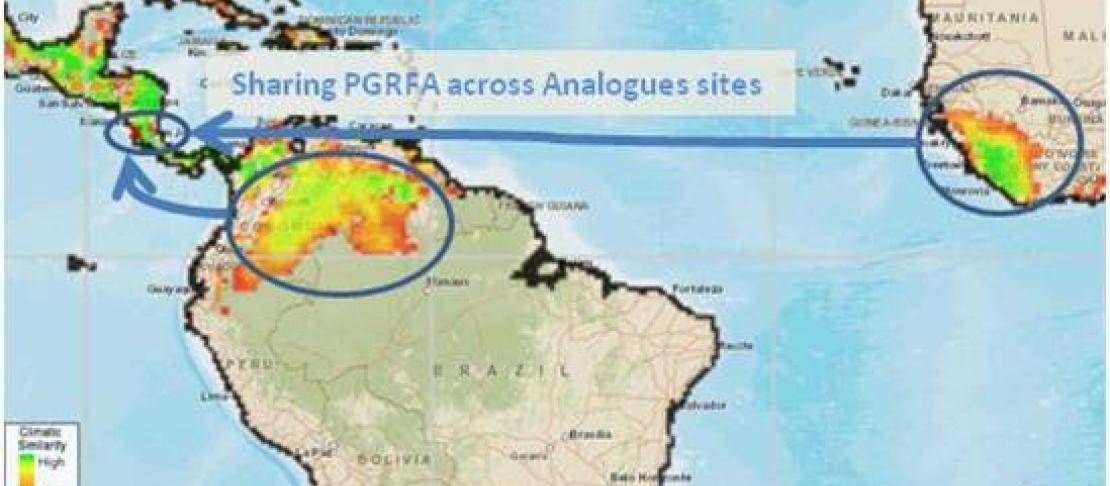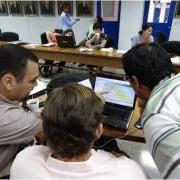Climate Analogues arrives in Costa Rica, this time for PGR conservation

by Flora Mer
The Climate Analogues tool is back, and showing its versatility once again. At the beginning of this year, Bioversity International showed an interest in using the tool, developed by the CGIAR Research Program on Climate Change, Agriculture and Food Security (CCAFS), within their newly launched project “Strengthening National Capacities on the Implementation of the International Treaty on Plant Genetic Resources for Food and Agriculture”.
The project aims to support eight countries in the implementation of the International Treaty (ITPGRFA) and includes a variety of research activities on issues of relevance to the conservation and use of plant genetic resources (PGR).
One of the project’s focuses is to understand countries’ changing germplasm needs as driven by climate change, and then explore solutions to PGR availability gaps and conservation priorities.
The Climate Analogues tool, by identifying areas whose present climate is similar to the climate predicted to occur in the future at any reference site of interest, allows options for moving germplasm as an adaptation strategy to be assessed.
The “Farms of the Future” project was one of the first examples of the application of Climate Analogues in the field. Ongoing in East Africa and Asia, the project takes farmers on a “learning journey” to visit sites which are climate analogues of their home, enabling them to visualize adaptation strategies that may be useful to them in the future. The Bioversity project represents yet another opportunity for the application of Climate Analogues, in this instance not so much for the farmers themselves as for the critical germplasm resources on which they rely.

As a first effort towards the integration of Analogues within Bioversity’s research agenda, specialists from CCAFS joined the national workshop that launched the project in Costa Rica and trained national team members in the use of the tool. The training took place on 22 August and was hosted by the Ministry of Agriculture and Livestock in San José.
Participants practiced the use of the online interface of the Climate Analogue tool to identify analogues of a chosen reference site of their interest, and to reflect on the feasibility of germplasm exchanges from analogue sites to the reference site as an approach for gradually adapting agricultural systems to climate change.
Participants recognized the utility of this innovative tool as a complementary guide for developing adaptation strategies based on genetic resources, and to test the functionality of the Treaty’s multilateral system. The use of climate analogues within this research activity will be undertaken in the remaining seven countries involved in the Bioversity project: Nepal, Bhutan, Rwanda, Burkina Faso, Ivory Coast, Uganda, and Guatemala.
Read more about Climate Analogues on the CCAFS website, the tool's online interface, and this blog post.
Also check out CCAFS working paper No. 12 "Climate Analogues: Finding tomorrow's agriculture today" for more detailed information on the Climate Analogues tool.
Want to know more about the "Farms of the Future" Project? Read the blog post "One man's future is another man's present: Farms of the Future hits Tanzania".
This blog post was written by Flora Mer, a visiting researcher at the Center for International Tropical Agriculture (CIAT) in Cali, Colombia working with CCAFS program team. To get more updates on our work on the analogues sites, follow us on Facebook, and on Twitter @Cgiarclimate.


